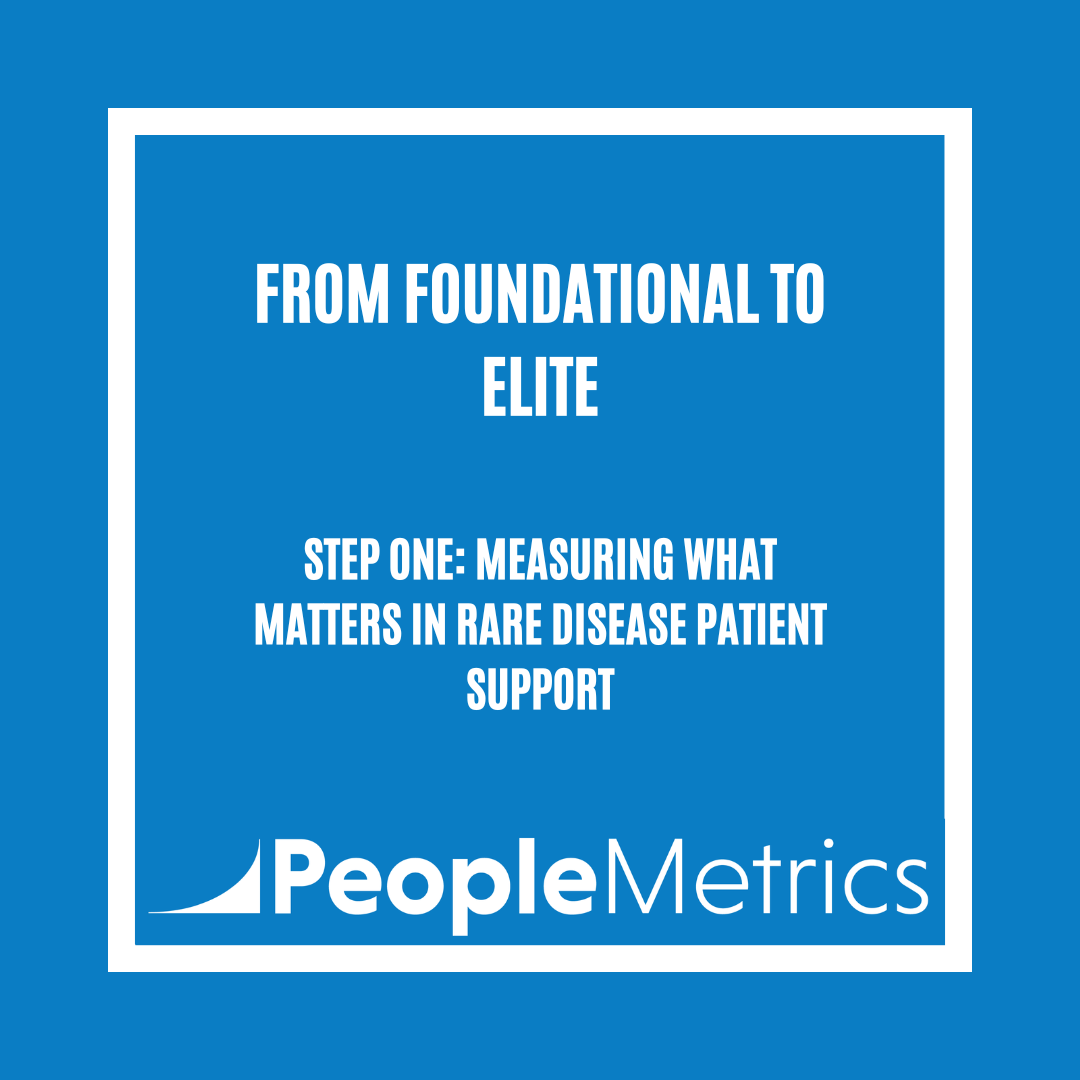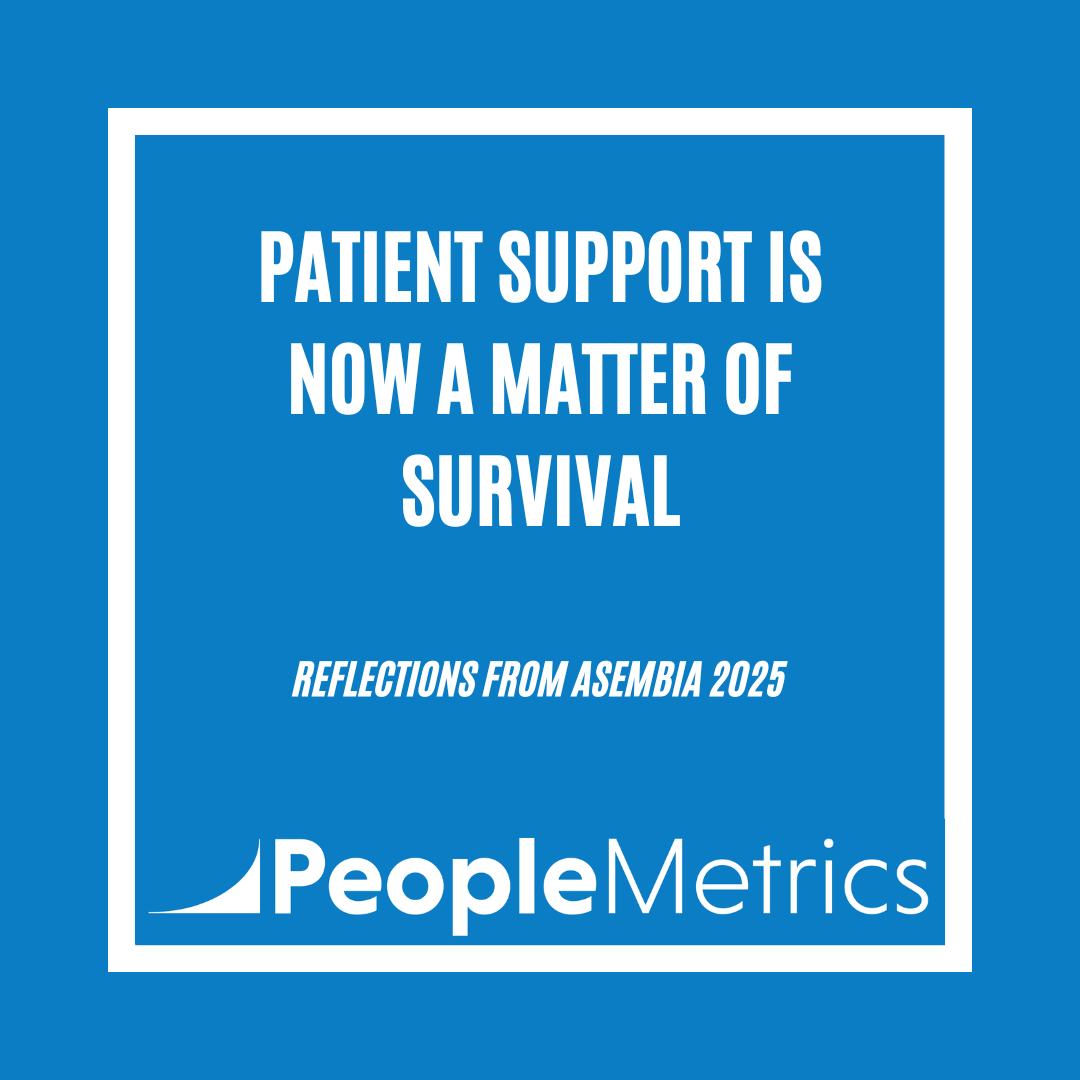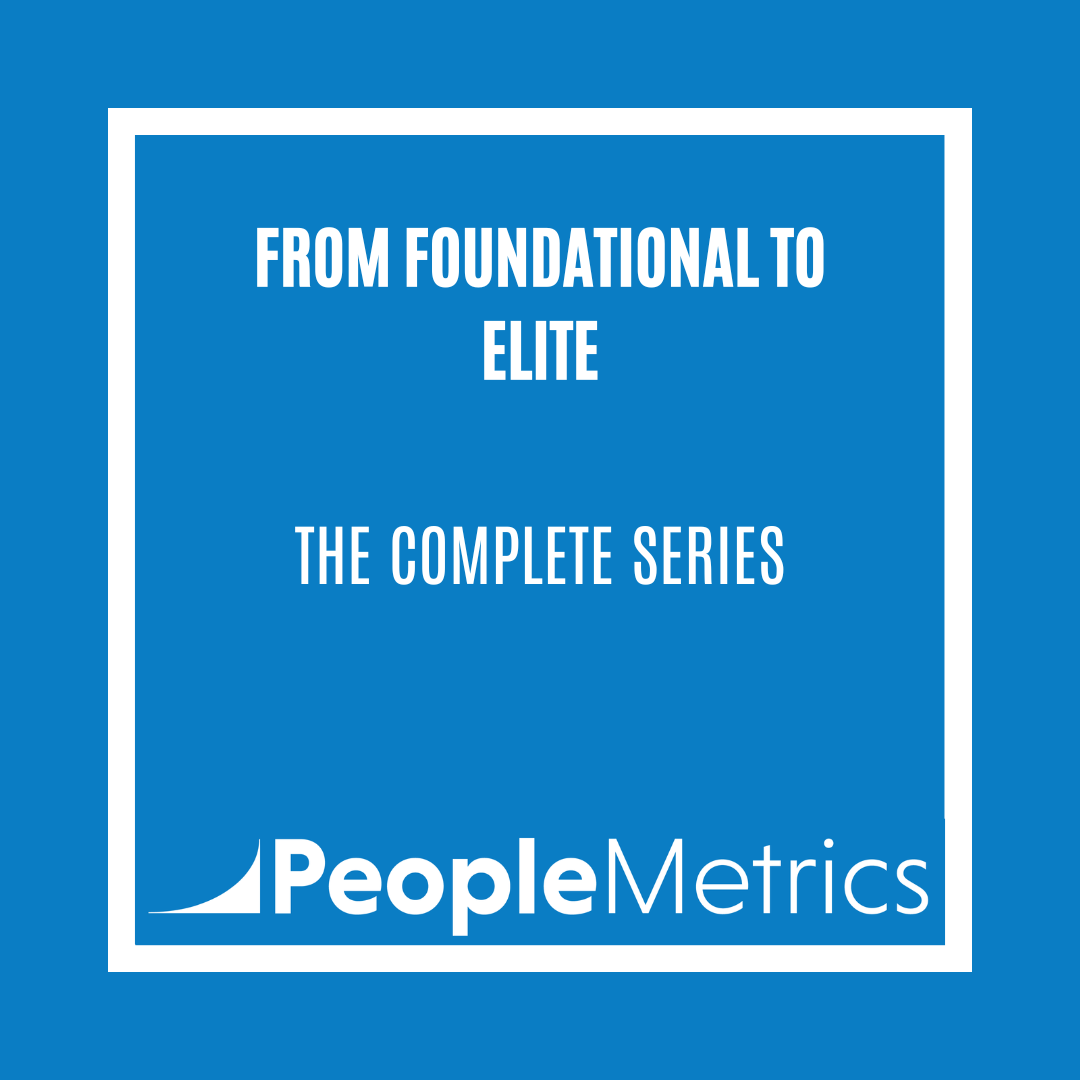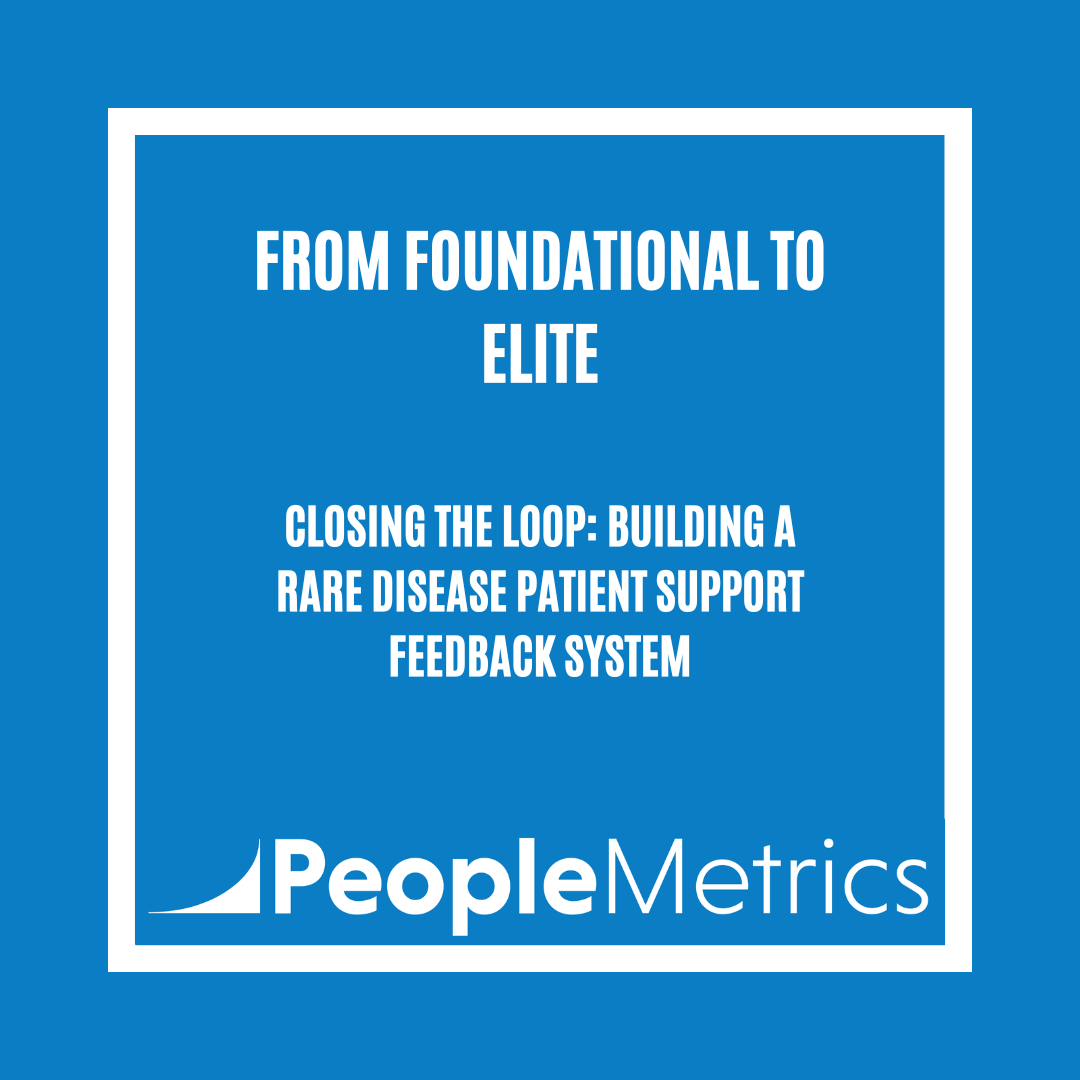If your rare disease support program is only collecting patient feedback once a year — or not at all — you’re not alone.
Many teams are still in what we call the Foundational stage of experience measurement.
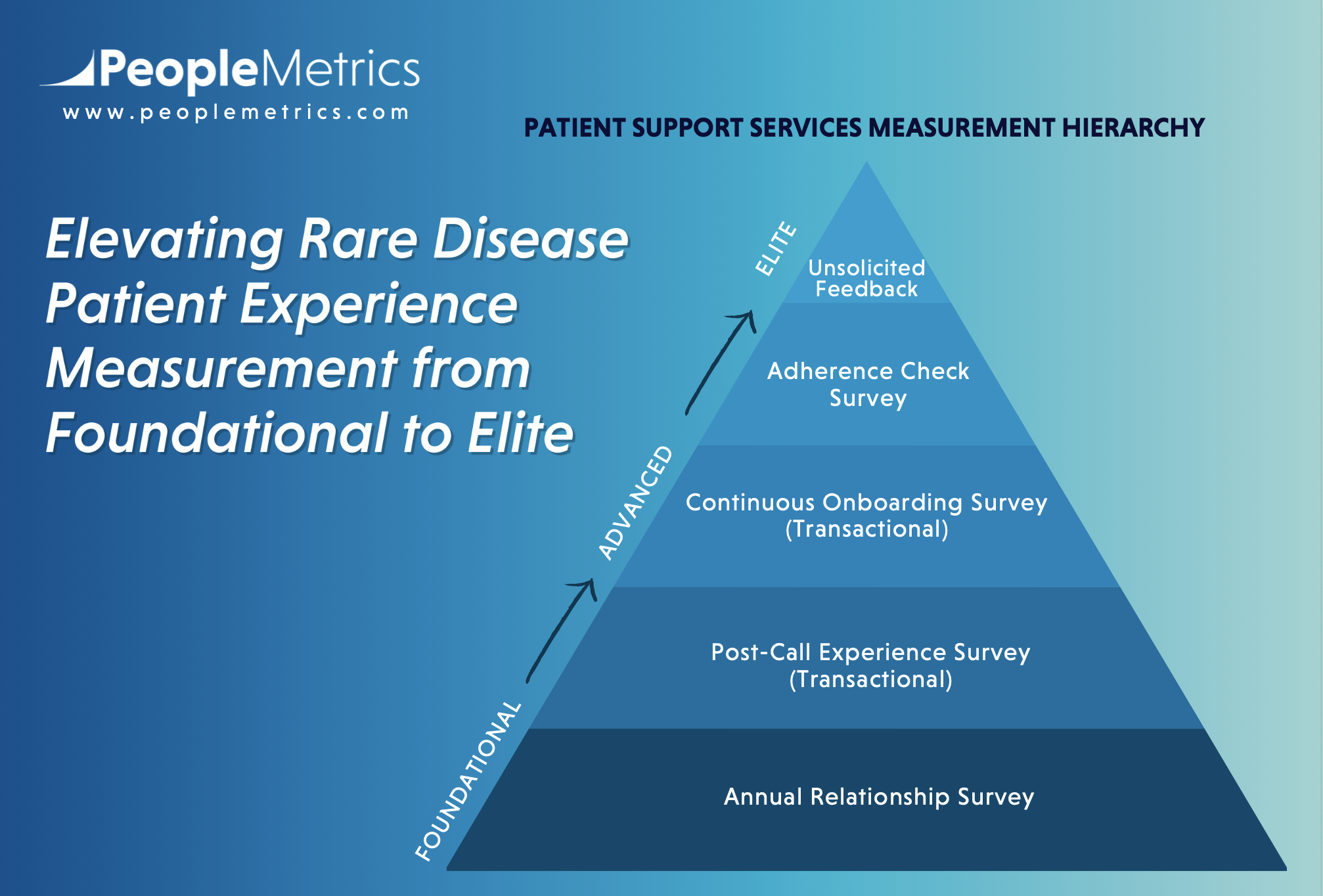
And that’s okay — as long as it’s a starting point, not the end goal.
At this level, the goal is simple: start listening with purpose.
Begin gathering structured feedback at key moments that matter — both to patients and your team’s success.
Here’s what that looks like.
- The Annual Relationship Survey: Baseline Insights
This survey is your starting line. Sent once a year to patients engaged with the program over the past 6 months or so, as well as HCPs, it helps you:
- Benchmark overall satisfaction
- Identify systemic pain points for both patients and HCPs
- Understand how your program compares to alternatives or competitors
These longer surveys (10–15 minutes) provide broad, strategic insight — great for guiding year-over-year improvements and program design.
✅ Best for: uncovering high-level patterns and priority areas, for both patients and HCPs
⚠️ Limitation: it’s a single snapshot, not tied to specific interactions and the recollection period could be long (up to 6 months)
- The Post-Call Experience Survey: Immediate, Transactional Feedback
This short survey is sent right after a patient speaks with a case manager or support rep about any topic. Think of it as your real-time pulse check on how specific interactions with the Hub are going.
You’ll learn:
- How patients feel about their most recent interaction
- Whether their issue was resolved
- How helpful and empathetic your team came across
These insights can highlight coaching opportunities for team members and help identify gaps in service delivery before they become patterns.
✅ Best for: monitoring service consistency, coaching, spotting red flags
⚠️ Limitation: doesn’t tell you about the overall journey or experience over time
Why These Foundational Tools Matter
Rare disease patients often interact with support programs during stressful, high-stakes moments — accessing treatment, managing side effects, or navigating insurance. These are not “routine” customer interactions. They’re deeply personal.
And that means every data point you collect has an outsized impact:
- A poor experience might mean a patient does not onboard.
- A delay in access might lead to treatment abandonment.
- A great experience might make all the difference in the patient achieving the outcomes that the treatment promises.
Starting with these two types of surveys is the fastest way to inject patient feedback into your operations — without a major overhaul.
How to Do It Right
If you’re launching or refining your foundational feedback strategy, keep these tips in mind:
- Make sure your survey questions are vetted by your legal team!
- Keep post-call transactional surveys short (2 min max!) and mobile-friendly
- Send annual relationship surveys on a consistent schedule, include both patients and HCPs
- If you are using open-ended questions, make sure your survey partner is familiar with and trained in adverse event identification
- Share results across your team — not just leadership
What’s Next?
Once you’ve established these two listening posts, you’ll be ready to build toward the Advanced level! This involves continuous onboarding feedback and adherence check-ins.
These help you move from static to dynamic — and start improving the patient journey in real-time.
We’ll cover that in the next post.
Because when it comes to rare disease patient support, listening is just the beginning!
P.S. If you are attending Asembia in Las Vegas the week of April 28th, stop by our booth #1923, we would love to say hello!

